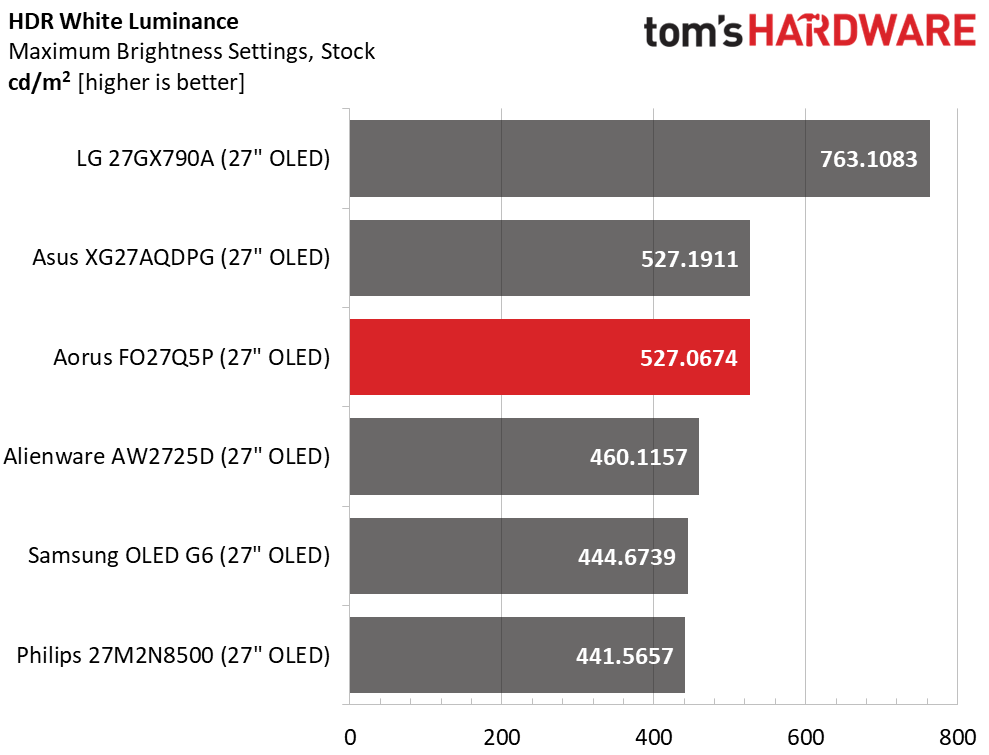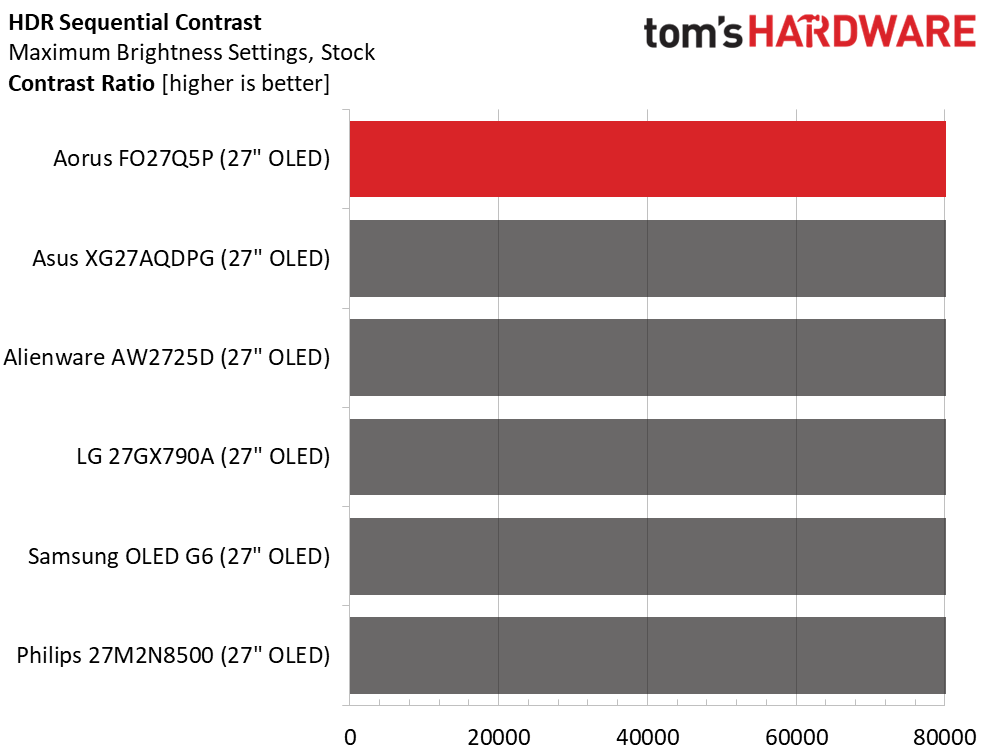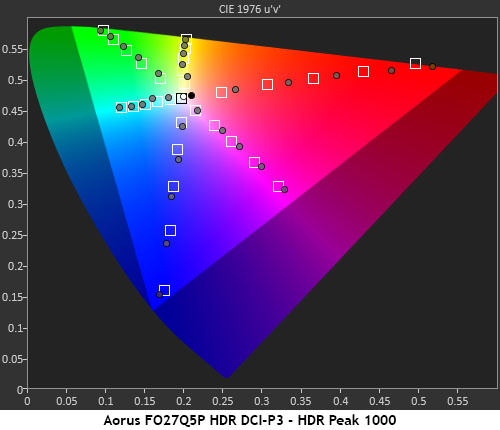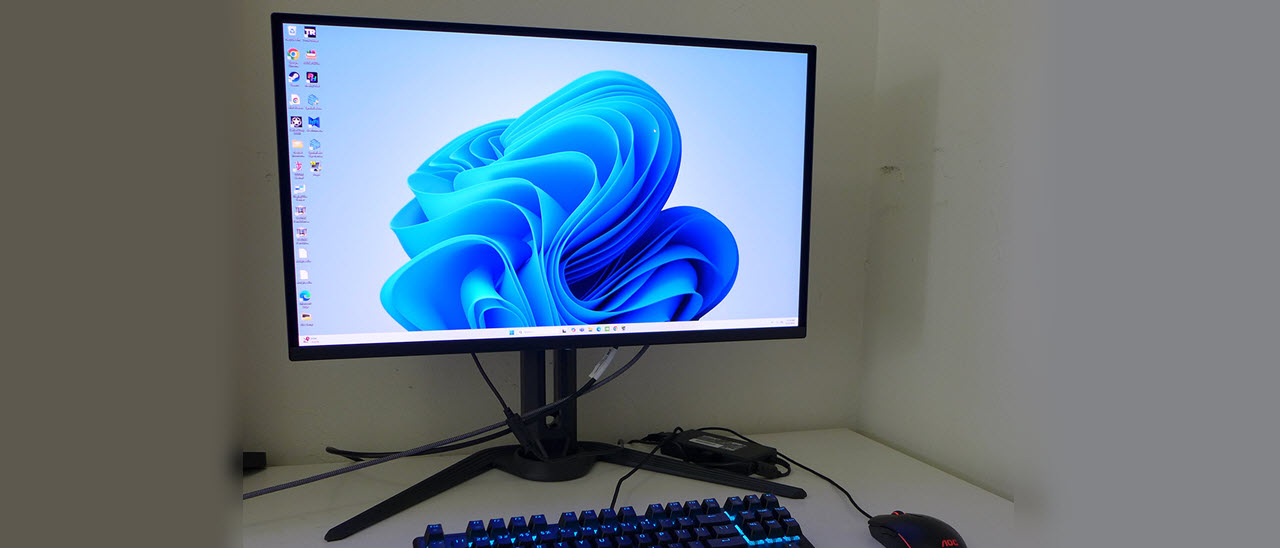Why you can trust Tom's Hardware
Our HDR benchmarking uses Portrait Displays’ Calman software. To learn about our HDR testing, see our breakdown of how we test PC monitors.
The FO27Q5P supports HDR10 signals with an automatic switch and five specific HDR picture modes. One is fixed, but the other four include luminance and color saturation adjustments, which is something most HDR monitors lack.
HDR Brightness and Contrast



If you want the brightest possible HDR, the LG has about 240 nits on the Asus and Aorus. But peaks of 527 nits are still very bright. Coupled with perfect blacks and infinite contrast, the FO27Q5P delivers superb HDR image quality with incredible depth and vivid color. It doesn’t get much better on the desktop than this.
Grayscale, EOTF and Color


I measured all the FO27Q5P’s HDR modes and found Peak 1000 to have the best color accuracy and luminance tracking. A solid EOTF like this is important for full detail rendering and HDR that looks like HDR, not just brighter SDR. Most OLEDs have no problem delivering in these tests.
The FO27Q5P’s extra color volume is evident in the fully covered green primary and the oversaturated red one. You also get some bonus blue and magenta. Hue tracking is also spot-on, which makes this monitor one of the best I’ve tested. That accuracy carries over to the BT.2020 test where the FO27Q5P covers up to 90% red, 75% green and 95% blue. This is excellent performance.
Test Takeaway: I use the term “killer HDR” with many QD-OLEDs because their incredible contrast and color saturation are just what that format needs to look its best. The FO27Q5P exemplifies the HDR10 standard and sets a benchmark for others to meet.
MORE: Best Gaming Monitors
Get Tom's Hardware's best news and in-depth reviews, straight to your inbox.
MORE: How We Test PC Monitors
MORE: How to Buy a PC Monitor

Christian Eberle is a Contributing Editor for Tom's Hardware US. He's a veteran reviewer of A/V equipment, specializing in monitors. Christian began his obsession with tech when he built his first PC in 1991, a 286 running DOS 3.0 at a blazing 12MHz. In 2006, he undertook training from the Imaging Science Foundation in video calibration and testing and thus started a passion for precise imaging that persists to this day. He is also a professional musician with a degree from the New England Conservatory as a classical bassoonist which he used to good effect as a performer with the West Point Army Band from 1987 to 2013. He enjoys watching movies and listening to high-end audio in his custom-built home theater and can be seen riding trails near his home on a race-ready ICE VTX recumbent trike. Christian enjoys the endless summer in Florida where he lives with his wife and Chihuahua and plays with orchestras around the state.
-
Heat_Fan89 Three years ago I purchased their 43" 4K monitor. It's LED but can run up to a 120Hz. It's been trouble free but a funny thing happened recently where I thought it failed. I was messing with some of the settings and all of a sudden I see this red dot appear out of nowhere right dab in the middle. I immediately thought stuck pixels. So I started researching how to possibly get rid of those stuck pixels.Reply
Well nothing worked. It turns out, I enabled by mistake a crosshair LED dot for first person shooters in the settings. :ROFLMAO: -
Moxylite Nice display (probably), but i'd get the extended warranty, A quick search of "Gigabyte monitor issues" says a TON, & both Asus & MSI 500hz equivalents are getting better reviewsReply
